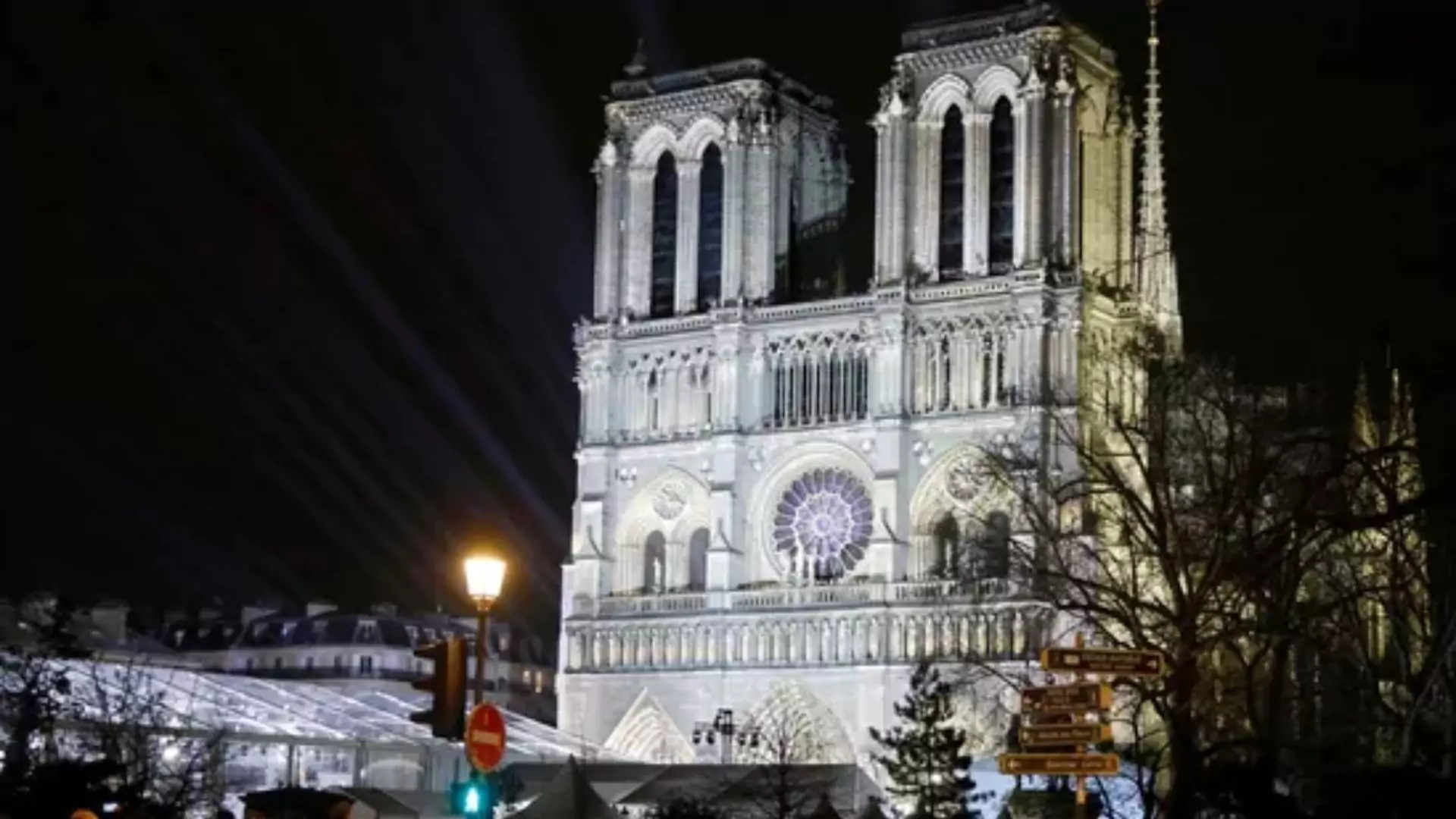After five years of meticulous restoration, the iconic Notre-Dame Cathedral in Paris is ready to welcome visitors once again. On December 8, coinciding with the Feast of the Immaculate Conception, the 860-year-old Gothic masterpiece will reopen its doors, marking a monumental moment in its rich history.
Notre-Dame Cathedral Rising from the Ashes of 2019
The cathedral has been meticulously restored to its former glory following the devastating fire that broke out in April 2019, ravaging it to great extents. Workers rebuilt its soaring spire, repaired the ribbed vaults, and rejuvenated the intricate flying buttresses. Stone gargoyles and delicate carvings have been restored to their former glory, and the white stone with golden embellishments now shine brighter than ever.
The reopening is not only a moment of celebration for Catholics but for all who hold Notre-Dame as a symbol of France’s cultural and historical heritage. As one of France’s most visited landmarks, the cathedral previously attracted approximately 13 million visitors annually, surpassing even the Eiffel Tower in popularity.
Notre-Dame Cathedral: A Living Monument to History
Notre-Dame de Paris is more than an architectural marvel; it is a vessel of French history. For centuries, it has been a witness to pivotal moments, from the French Revolution to the liberation of Paris in World War II.
Here are some interesting historical and architectural facts about this timeless structure:
A Choir Reflecting Christ’s Image
Notre-Dame has its designs based on symbolic imagery by the Christians. This is because the cathedral was erected by Bishop Maurice de Sully in 1163 at Île de la Cité. Its choir, to the left side of the central nave, somewhat sags, and has a drooping head which seems like Christ’s as it hangs on the cross. Such adds spirituality to this architectural marvel in Gothic architecture.
Rooted in the Golden Ratio
The architecture of the cathedral is a testament to mathematical precision. Its Gothic design is based on the “Golden Ratio,” a mathematical principle associated with natural harmony and beauty. This sacred geometry ensures that Notre-Dame’s façade and interiors evoke an innate sense of balance and perfection, contributing to its timeless allure.
A Political Venue of Historical Significance
Beyond its role as a house of God, the Notre-Dame has been an important landmark of political history. In 1302, the vault of which was unfinished at the time, King Philip IV first assembled the first Estates-General; it brought together representatives of the clergy, nobility, and commoners, and would establish the French parliamentary system.
The Heart of French Roads
For over three centuries, Notre-Dame has stood as the geographic heart of France. Since 1769, it has provided the official reference point from which distances between French towns are measured. A compass rose-shaped stone in the courtyard of the cathedral marks this symbolic “kilometer zero.
A Beacon During World War II
The symbol of Paris’s strength was Notre-Dame during the period of World War II. On August 25, 1944, General Charles de Gaulle walked to the cathedral as he led the liberation of Paris. Its bells were ringing to mark the victory, and de Gaulle sang the Magnificat with the choir to signify national unity amidst triumph.
Grand Reopening Ceremony
Due to wind gusts of up to 80 kilometers per hour, the reopening ceremony of Notre-Dame will take place indoors. The Élysée Palace and the Paris diocese jointly announced the decision.
Despite the change in weather, a myriad of dignitaries, royalty, and celebrities are expected to attend the event. Among them will be Britain’s Prince William, former U.S. President Donald Trump, and Pharrell Williams, who is also rumored to perform at the gala.



















